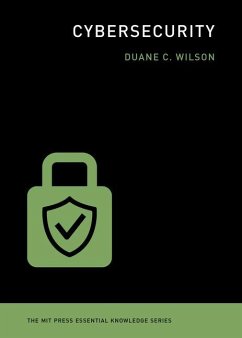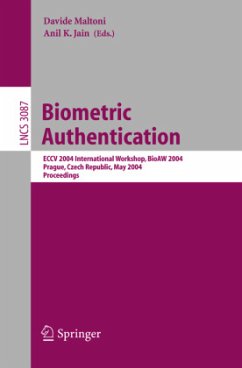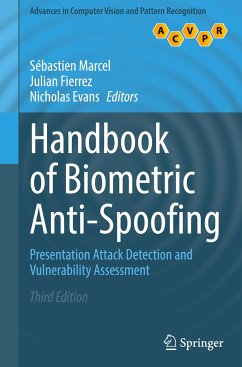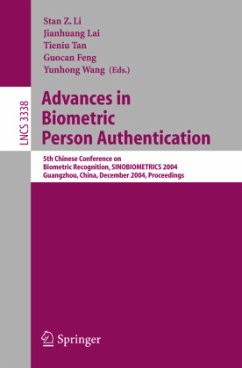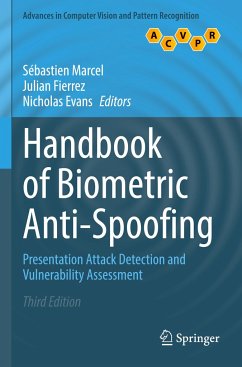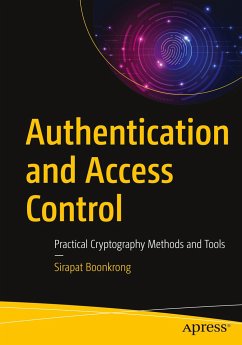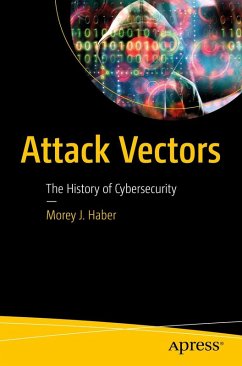
The Zero Trust Framework
Leading to a Passwordless World
Versandkostenfrei!
Versandfertig in über 4 Wochen
43,99 €
inkl. MwSt.

PAYBACK Punkte
22 °P sammeln!
Learn what the Zero Trust Framework is and how it can be used to eliminate the need for any kind of password. This book discusses how each zone in this framework has its own layer of security, and it is highly recommended that users incorporate at least three or more layers of authentication mechanisms, which will create the environment for multifactor authentication (MFA).You will learn how biometric technologies can be used (iris, facial, fingerprint recognition). Another important concept covered is privileged access management. Once an end user has their respective templates created, they ...
Learn what the Zero Trust Framework is and how it can be used to eliminate the need for any kind of password. This book discusses how each zone in this framework has its own layer of security, and it is highly recommended that users incorporate at least three or more layers of authentication mechanisms, which will create the environment for multifactor authentication (MFA).
You will learn how biometric technologies can be used (iris, facial, fingerprint recognition). Another important concept covered is privileged access management. Once an end user has their respective templates created, they will be saved and used for subsequent authentication attempts on an automatic basis.
Although the biometric templates are well-fortified, they do need an extra layer of protection, and this is where the concepts of biocryptography come into play. You will learn about further encryption of the iris, facial, and fingerprint recognition templates.
The book also delves into quantum mechanics and shows you how to use hashing algorithms to make sure that biometric templates have maintained their integrity from the point of authorization to the point of authentication. But these, too, are prone to cyberattacks. The use of quantum mechanics and photon particles is discussed and you will know how they can provide better levels of integrity.
You will learn about:
An examination of the latest cryptography algorithms.Fundamentals of Iris Recognition and its algorithms (Gabor Wavelets).Fundamentals of Facial Recognition and its algorithms (Hidden Markov Models).Fundamentals of Fingerprint Recognition and its algorithms (Hexademcial Algorithms).Biocryptography from a one to many approach.Biocryptography from a hosted approach.How Biometrics can play the role of MFA in the ZTF.Details about the point of authentication to the point of authorization for shared resources.
Who This Book Is For
CISOs and IT security managers who are looking at getting away from the traditional perimeter defense line of thinking
You will learn how biometric technologies can be used (iris, facial, fingerprint recognition). Another important concept covered is privileged access management. Once an end user has their respective templates created, they will be saved and used for subsequent authentication attempts on an automatic basis.
Although the biometric templates are well-fortified, they do need an extra layer of protection, and this is where the concepts of biocryptography come into play. You will learn about further encryption of the iris, facial, and fingerprint recognition templates.
The book also delves into quantum mechanics and shows you how to use hashing algorithms to make sure that biometric templates have maintained their integrity from the point of authorization to the point of authentication. But these, too, are prone to cyberattacks. The use of quantum mechanics and photon particles is discussed and you will know how they can provide better levels of integrity.
You will learn about:
An examination of the latest cryptography algorithms.Fundamentals of Iris Recognition and its algorithms (Gabor Wavelets).Fundamentals of Facial Recognition and its algorithms (Hidden Markov Models).Fundamentals of Fingerprint Recognition and its algorithms (Hexademcial Algorithms).Biocryptography from a one to many approach.Biocryptography from a hosted approach.How Biometrics can play the role of MFA in the ZTF.Details about the point of authentication to the point of authorization for shared resources.
Who This Book Is For
CISOs and IT security managers who are looking at getting away from the traditional perimeter defense line of thinking





